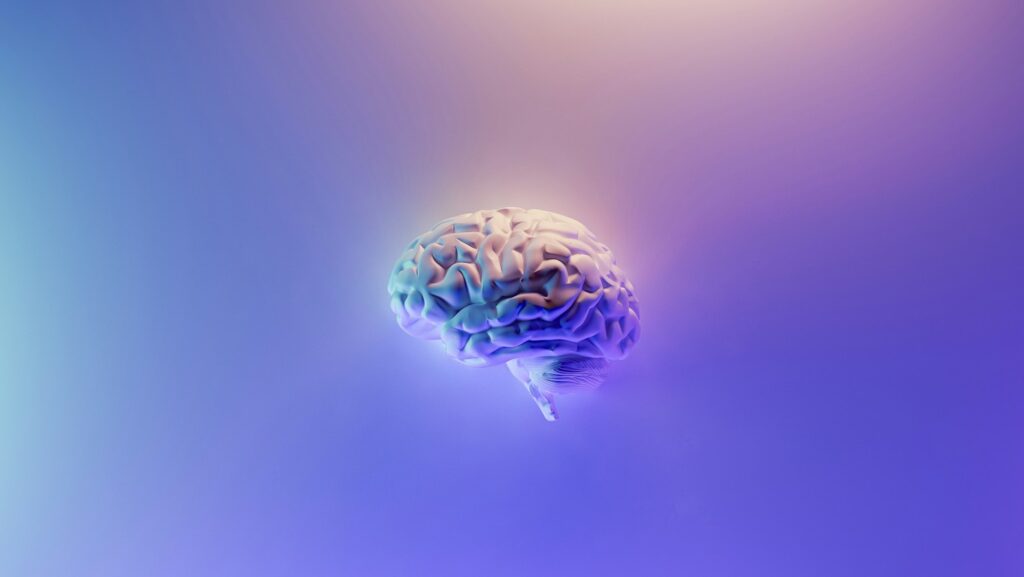AI and neuroscience have been influencing and interacting with each other for far longer than the advent of today’s large language models. Biological neural networks inspired the design of neural architectures in AI, and now AI helps us explore how brain systems may work. You may already notice changes in your work patterns through using AI, but how is AI changing your brain? How is your neuroplastic brain navigating the stress and excitement of using AI? And how can you stay balanced and human in this fast-evolving landscape?
Your brain and AI: repeat or retreat?
Your brain constantly balances curiosity with caution, seeking to protect you while conserving resources. This balancing act is part of a survival mechanism that primes you to respond to novelty. The nucleus accumbens, a cluster of cells in the basal ganglia, plays a key role in this process by helping you decide whether to repeat or retreat in the face of something new.
When you feel curious, the front of this area releases dopamine, encouraging exploration.
When you feel fear, the back of the nucleus accumbens releases dopamine and makes you risk-averse.
This balancing act isn’t the only thing that is going on in your brain as you come to grips with AI.
While direct evidence that AI itself changes brain structure is limited, there is research suggesting it may impact cognitive processes. Take ‘cognitive offloading’ as an example. When you need a quick answer, it’s easier to ask an AI tool like ChatGPT than to work it out yourself. You do less thinking, which saves energy – a plus for the brain. However, this could eventually harm memory, learning capabilities, decision-making, and even spatial reasoning. AI helps conserve mental energy, but repeated reliance on it might subtly alter the way your brain stores information.
In this AI-powered era, every interaction with technology asks us to decide: repeat for the convenience or retreat and exercise your brain.
How to use AI without damaging cognitive ability
Fortunately, there are ways to enjoy the benefits of AI without sacrificing your cognitive agility:
1. Maintain cognitive flexibility
Relying exclusively on AI for problem-solving may reduce your brain’s ability to adapt to new information and work with creative strategies.
To keep your cognitive flexibility strong, practice exercises like ‘perspective switching’ to approach a problem from different viewpoints. Before asking AI for insights, try listing pros and cons or consider two opposing viewpoints. This mental agility can help you approach challenges with resilience and originality.
2. Strengthen decision-making skills
AI can be a powerful tool in decision-making, quickly processing vast amounts of data to help weigh options. However, it’s easy to over-rely on AI, which could lead to analysis paralysis from too much information. To keep your decision-making sharp, practice ‘structured scepticism’.
Question AI’s recommendations and consider your own reasoning – what information do you agree or disagree with, and why? This approach exercises the prefrontal cortex, where critical thinking happens, and ensures you still listen to your intuition.
3. Balance personalised learning with social learning
AI-driven personalised learning paths offer significant benefits, like higher engagement and self-paced study. However, these benefits come with potential downsides.
Social learning, connecting with others, and sharing diverse viewpoints stimulate oxytocin release, which helps reduce stress, increase empathy, and strengthen social bonds.
Ask yourself if personalised learning is enhancing your learning experience or if you’re missing out on the benefits of learning with others.
4. Improve focus and attention
Technology and AI provide instant access to information, which can encourage multitasking and quick switching between tasks. However, this ‘continuous partial attention’ may reduce understanding and retention.
Attention is the gateway to memory – if your brain is divided across multiple stimuli, memory suffers.
Combat this by engaging in focused learning sessions where distractions are minimised, and test yourself to practice recall rather than simply recognising information.
5. Keep your memory active
In a world where digital amnesia is real, we don’t need to remember facts anymore because we can always find them online. But each fact remembered is like a mini workout for the brain, keeping neural networks in the hippocampus strong.
Consider activities that exercise memory, like remembering dates or directions without technology. Using retrieval practice to test your memory improves long-term retention, particularly when you want to develop skills or knowledge.
Exercise grows brain cells. Strenuous physical activity promotes neurotrophic growth factor, essentially ‘fertilizer’ for brain cells, especially those in the hippocampus. Using AI doesn’t have to mean sitting still. Take your AI assistant with you on a walk or jog to refresh your mind and body and keep your memory in shape.
How AI is changing your brain: find the balance
In this AI-powered era, every interaction with technology asks us to decide: repeat for the convenience or retreat and exercise your brain.
Balance is key – harness AI to enrich your cognitive skills but don’t let it replace your mental workout. Choose when to dive in and when to hold back letting curiosity and caution dance. Repeat or retreat: it’s a choice that shapes your brain’s journey.





